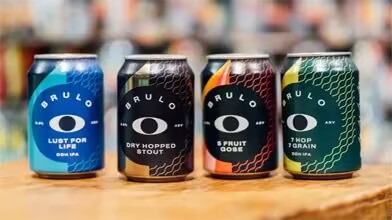The Printing Process of Aluminum Beverage Cans
Sep 14, 2024
Aluminum beverage cans are not only functional but also serve as a canvas for creative branding and marketing. The printing process used for these cans is a critical step that ensures the visual appeal and effectiveness of the product. In this blog, we’ll explore the various stages of the printing process for aluminum beverage cans.
1. Surface Preparation
Before printing can begin, the aluminum can surface must be properly prepared. This involves cleaning and treating the surface to ensure that the ink adheres effectively. The surface is typically washed with a chemical solution to remove any grease, dust, or contaminants. After cleaning, a primer may be applied to enhance adhesion and provide a smooth base for printing.
2. Printing Methods
There are several printing methods used for aluminum cans, each with its advantages:
a. Flexographic Printing
Flexographic printing is one of the most commonly used methods for aluminum cans. This technique uses flexible relief plates to transfer ink onto the can's surface. It is ideal for high-volume production and allows for vibrant colors and detailed graphics. Flexo printing is particularly advantageous for large runs due to its speed and efficiency.
b. Offset Printing
Offset printing is another method that can be used for aluminum cans, especially for smaller runs or more intricate designs. In this process, the image is transferred from a plate to a rubber blanket and then onto the can. Offset printing offers high-quality images and is effective for detailed designs, but it is generally slower than flexographic printing.
c. Digital Printing
Digital printing is gaining traction in the beverage can industry, especially for short runs and customized designs. This method eliminates the need for plates, allowing for rapid printing and greater flexibility in design changes. Digital printing is ideal for promotional campaigns or limited-edition cans, as it allows brands to quickly respond to market trends.
3. Ink Types
The choice of ink is crucial in the printing process. Water-based inks are commonly used for their eco-friendliness and safety. These inks dry quickly and provide excellent adhesion to the aluminum surface. UV-curable inks are also popular, as they cure instantly under UV light, offering durability and resistance to scratches and fading.
4. Quality Control
Quality control is an essential part of the printing process. After printing, cans undergo rigorous inspection to ensure that the colors are accurate, the designs are correctly aligned, and there are no defects. Any cans that do not meet quality standards are removed from the production line to maintain the integrity of the final product.
5. Final Touches
Once the printing is complete and quality assurance checks are done, the cans may receive additional treatments, such as a coating for added protection or a lacquer finish to enhance the appearance. These final touches help ensure that the designs remain vibrant and intact throughout the product's lifecycle.
Conclusion
The printing process for aluminum beverage cans is a complex yet fascinating journey that combines technology and creativity. From surface preparation to final quality checks, each step plays a vital role in producing visually appealing and functional products. As brands continue to innovate and seek new ways to capture consumer attention, the printing techniques for aluminum cans will undoubtedly evolve, leading to even more exciting designs in the future.
